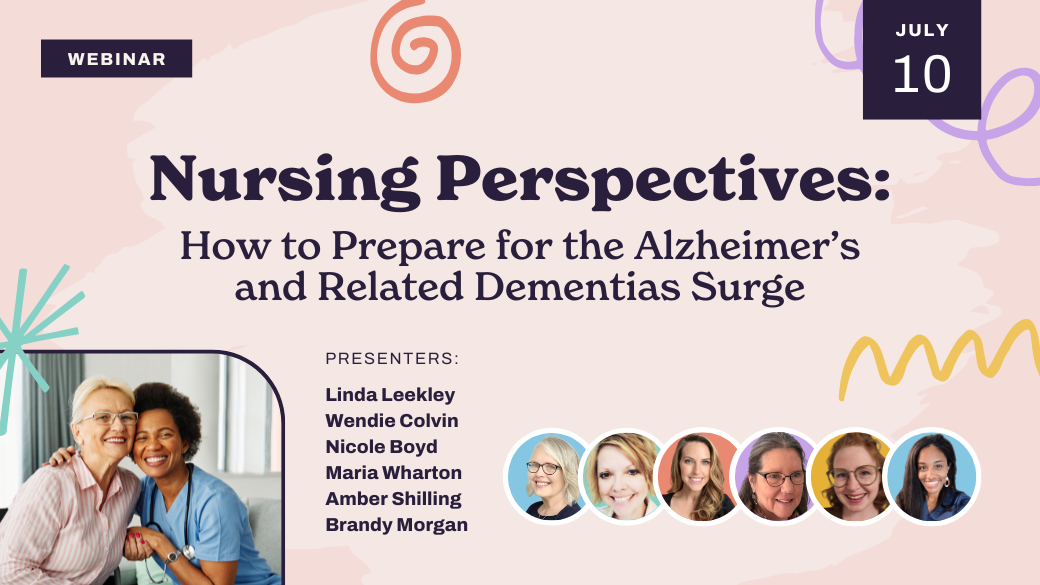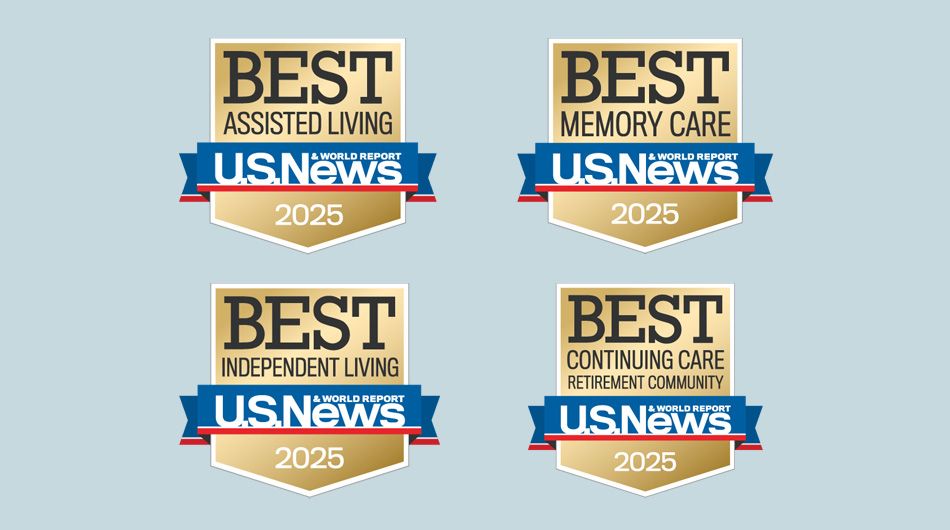Great volunteers are essential for exceptional hospice care, but building a world-class volunteer program requires strategy, tactics, and a change in mindset for some.
Do you consider your volunteers to be one of your most valuable assets? Are you struggling to rebuild your hospice volunteer pool post-COVID-19? Do you have questions that keep you up at night about your current volunteer program?
Questions such as:
In my 30+ years as a hospice nurse, I have had the privilege of working with many hospice volunteers. I have seen firsthand the difference they can make for patients and families in the last months, weeks, days, and hours of life. I have also seen families struggle through difficulties without volunteer support due to their own choice to forgo volunteer services. I’ve even experienced the rare occasion where I had no volunteer to offer and knew it would have made a huge difference for the patient and family.
Hospice volunteers provide so much value to patients, families, and staff. In order to recognize that value in your organization, you need to look and listen. Spending time at an interdisciplinary team meeting provides a wonderful opportunity to see how volunteers are making a difference for your patients, families, and staff.
Every hospice has a flashy volunteer story:
I encourage you to pay just as much attention to the simpler stories you will hear in your interdisciplinary team meetings:
These stories don’t make splashy headlines but do not underestimate their value to the patients, families, and staff involved. To them, the volunteers, and the care they provided in these situations meant everything! No matter how much time has passed, when a family gathers to remember a loved one, stories of how the volunteers were there for them and made a difficult time a little easier, are part of the conversation. In fact, many hospice family members express an interest in volunteering for hospice after the death of a loved one. They see it as a way to give back, to provide the same support they found so valuable to others in a similar situation.
Now let’s answer those hospice volunteer questions we raised at the beginning of this article.
1. Why did CMS mandate volunteer involvement as a condition of participation for hospice?
The Connecticut Hospice has a comprehensive explanation for why Medicare requires volunteers in the hospice program. As the first hospice program in the United States, The Connecticut Hospice is a leader in the hospice field and a willing partner in sharing their expertise with others. A review of their website helps explain how the hospice volunteer requirement makes sense.
This is how they explain the requirement:
- Hospice volunteers provide supporting services. They are an extension of the hospice staff helping to ensure patients and families can have their needs met. A strong hospice volunteer program “makes it possible for a hospice to do more for everyone.”
- Hospice volunteers offer specialized skills outside the scope of professional staff expertise. Volunteers with a “green thumb” can help a busy family caregiver create a flower box in the window outside their loved one’s chair. Hairdressers, massage therapists, and musicians are examples of the many volunteers who bring their unique talents to patients and families in hospice.
- Volunteers can focus on specific needs. The hospice paid staff can find themselves stretched thin trying to meet the needs of their patients and families. Hospice volunteers are typically assigned to one patient/family, or they volunteer to meet a particular need. As a hospice nurse, I struggled when I needed to leave a dying patient’s bedside when there wasn’t any family to be with them. The patient was comfortable but leaving someone to die alone didn’t feel right. Neither did delaying care for my other patients that day. Our organization had a group of “vigil volunteers,” who were specially trained to sit with the dying and provide support and presence. These volunteers allowed me to care for my other patients, knowing my patient was not alone.
- Volunteers offer the gift of time and company. The volunteers who gave of their time to watch old westerns, listen to gospel hymns, or sit with a dying patient who would otherwise be alone, each gave the most precious gifts of all: the gifts of time and presence. Family members knew that their loved ones were not alone, that someone who was specifically trained to provide what was needed was there when it mattered.
- Volunteers free up time for professional staff. You may see volunteers in your inpatient unit answering phones, greeting visitors, or helping to move patients outside to enjoy a sunny day. Taking care of these tasks means your professional staff can spend more time doing the things they are trained to do. You can see the same benefits in the home setting as volunteers walk the family dog, sit with the patient so the family can discuss what to expect next with the nurse, or deliver a form to the office so the social worker can move on to their next patient.
- Hospice volunteers offer a safe outlet for patients and family members to unburden themselves. At the end of life, patients and family members alike experience big feelings, concerns, and worries. Sometimes, sharing those feelings and concerns with someone outside the circle of care is easier than sharing them with the patient or other family members. Patients may find it easier to share feelings of gratitude for family members, sadness for missed opportunities, or other big feelings with a volunteer rather than with family members. Feelings of anger and frustration are hard to share when someone you love is dying. Spending time with a volunteer who can listen without judging can make all the difference for a family member struggling with these feelings.
2. What value do hospice volunteers add to my program?
As a hospice agency, you are required to track your hospice volunteer hours along with all of the other items you are required to document for your paid employees. It is only natural to ask what value the volunteers bring in return for all of that work.
I have provided examples of the value your hospice volunteers bring to your patients and families. I will talk a bit more about the value they offer your staff here.
3. How can I develop world-class hospice volunteers
Now that you understand why CMS requires a volunteer program and the value volunteers bring to your program, how do you make sure your hospice volunteer program is the best that it can be? How do you ensure you have “world-class” volunteers who are the best at meeting the needs of the patients and families you serve?
Each volunteer comes to your program with their own unique skillset and life experience. Your responsibility is to ensure they are equipped to support patients, families, and staff in their everyday experiences. You are not teaching them to play the harp, garden, or read to someone, you are training them to use these preexisting skills in a hospice setting.
Your organization must develop a policy for volunteer training that meets the requirements outlined by CMS. Examples of topics your training program should include are listed below.
Where can you get hospice volunteer training?
Activated Insightsis proud to announce that we now offer volunteer training using renowned content from industry leader, Teaching Transitions. Our volunteer training program is a robust suite of e-learning courses designed to prepare your volunteers for success in an engaging way that builds their confidence and supports the development of strong relationships with your teams. The content is designed to meet the needs of your volunteers while helping you ensure your organization is meeting the CMS training requirements. Take a look at what we have to offer!
Explore our new training and see how it can help you develop your hospice volunteer program into a world-class provider of services to the patients and families you care for.
Focus on the little things
I leave you with the following quote from Matt Gutierrez. Pay attention to the little things. They are more important than you think.
Ensuring you have skilled volunteers to take care of things that seem small is so important. Providing a volunteer to read a story, watch a TV show, walk the dog, or sit with a dying patient without a family means the world to all involved. Acknowledge the importance of these simple things. Highlight them in your social media postings and newsletters. Don’t let the everyday work of your volunteers be eclipsed by the splashy event that makes the local news. Yes, the volunteer who brings the penguins to visit a dying child should be celebrated. So should the volunteer who shows up weekly to watch The Rifleman and lend a listening ear.
Don’t lose sight of the value of your “world-class” volunteers. The time and expense you put into your program comes back to you in more volunteers, more patients, a better experience for patients and families, better experiences for your staff, and better satisfaction scores for your organization.
Let Activated Insights partner with you to provide the training your volunteers need to become world class.
Related Posts











